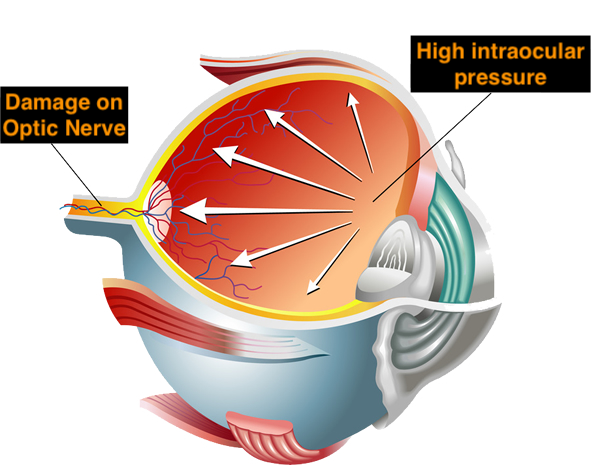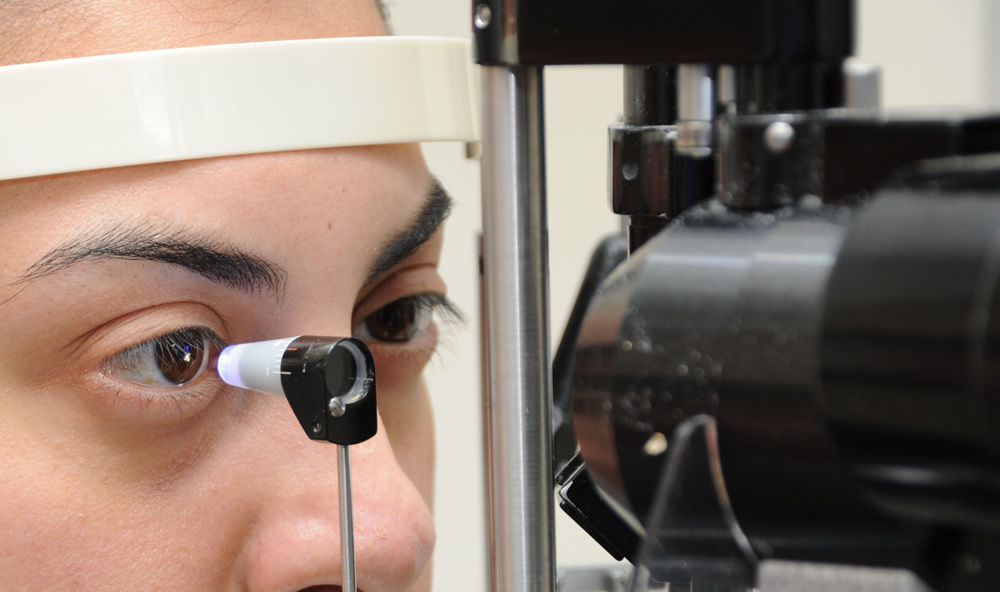Glaucoma
What is Glaucoma?
Glaucoma is a common eye disease affecting millions of people. If not treated, it can cause vision loss. In the glaucoma, the fluid in the eye is high enough to damage the eye nerve required for vision.

Glaucoma, which occurs frequently over the age of 40, usually develops very steeply over the years. It is the most common type of glaucoma and is called "Primer Open Angle Glaucoma". During this period, some of the glaucomatous people do not have any symptoms of the disease. The glaucoma can only be noticed by most patients in the advanced stage and when significant vision loss occurs. Early diagnosis is important because there is no return after optic nerve is damaged. The abnormal increase in intraocular pressure detected during normal eye examination may be the first sign of the disease. Eye examinations performed at regular intervals are best for early diagnosis and treatment of glaucoma.
Another type of glaucoma is the narrow-angle glaucoma, which occurs again in a sudden crisis in later ages. A tabby character with severe eye pain, decreased vision, redness and nausea in the eye, and vomiting. It requires emergency treatment. In infant and childhood species, eye irritation, sensitivity to light and eye growth are observed.
What causes glaucoma?
Normally, a liquid is continuously made in the eye to feed eye tissues and this intraocular fluid also leaves the eye in some way (trabecular meshwork). In glaucoma, poor fluid drainage cause consequent increase in intraocular pressure. Rising intraocular pressure causes damage to the optic nerve and death of the nerve. In some patients, when the intraocular pressure is normal, the visual acuity is equally destroyed due to the impaired blood flow in the visual nerve (Normal Pressure Glaucoma). Persistent vision causes permanent vision loss when the cells die.

How is the glaucoma diagnosed?
The glaucoma is diagnosed by a careful eye examination. The eye doctor at the eye examination for diagnosis:
-It measures your intraocular pressure with a device called a tonometer. He examines the eye nerves by performing eye examination.
-It tests the visual field to determine if it is missing in the visual field if it is necessary.
The only way to prevent glaucomatous visual loss is early diagnosis. The patient can not realize these losses unless there is significant damage due to glaucoma in the visual field. For this reason, it is important to carry out advanced examinations such as eye examinations and visual field at regular intervals.
Factors that increase glaucoma risk include:
-The advancing age
-Glaucome story in the family (Gnetic predisposition)
-Smoking
-Diabetes
-High-Low blood pressure
-Myopia
-Long-term cortisone treatment
-Eye injuries
-Migraine
It would be appropriate for people with these properties to have eye examinations in terms of glaucoma.
Is glaucoma treatable disease?
Open-angle glaucoma is treated primarily with a variety of medications that reduce intraocular pressure. These drugs are usually eye drops. Intraocular stent therapy is successfully applied in patients who can not take medication. Surgery and laser interventions can also be performed if necessary. The purpose of these treatments is to protect the remaining sight of the patient and does not increase the visibility. The narrow-angle type treatment that emerged with the crisis is very urgent. In congenital glaucoma, the treatment is mainly the surgeon. Some patients may require more than one surgical procedure.


